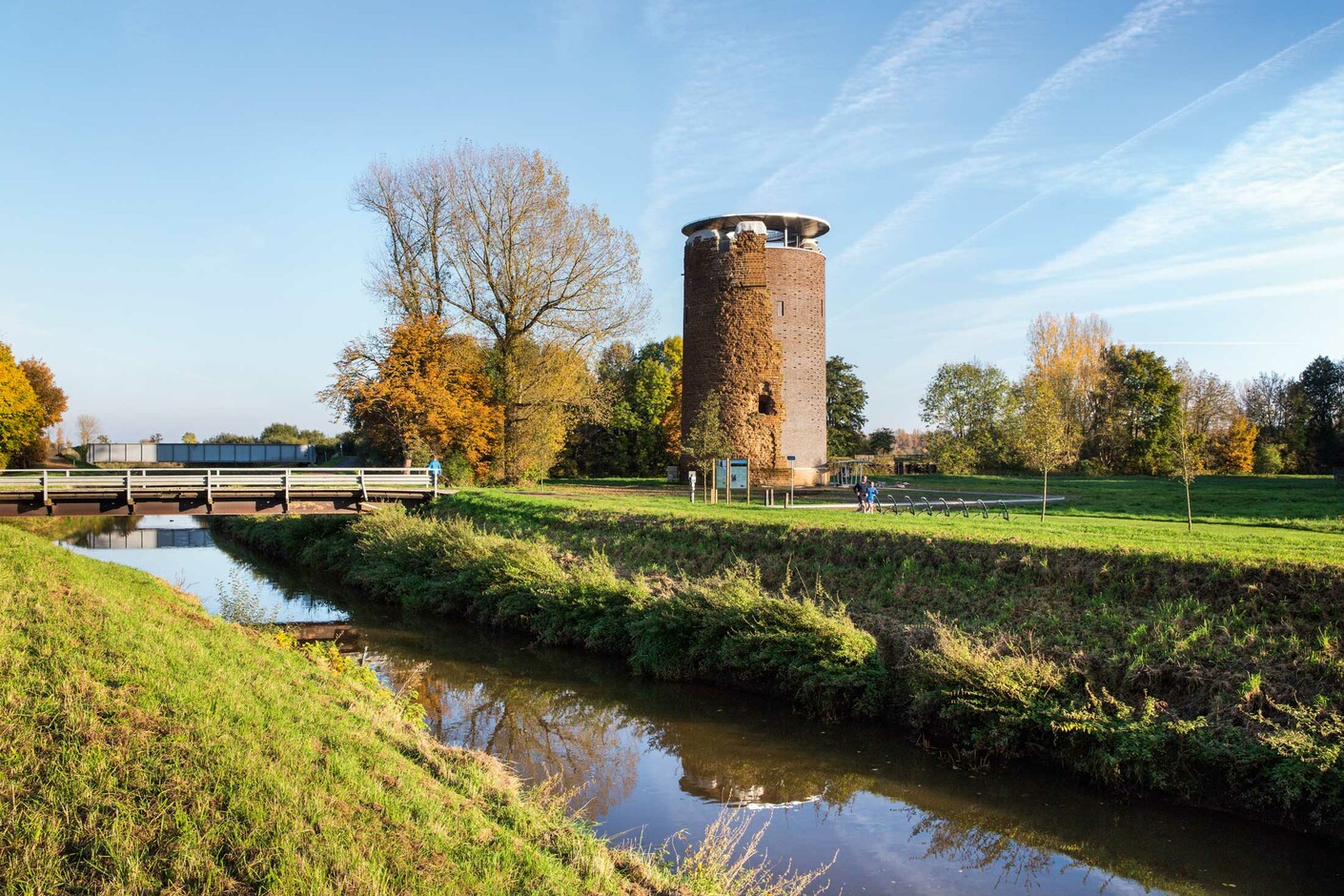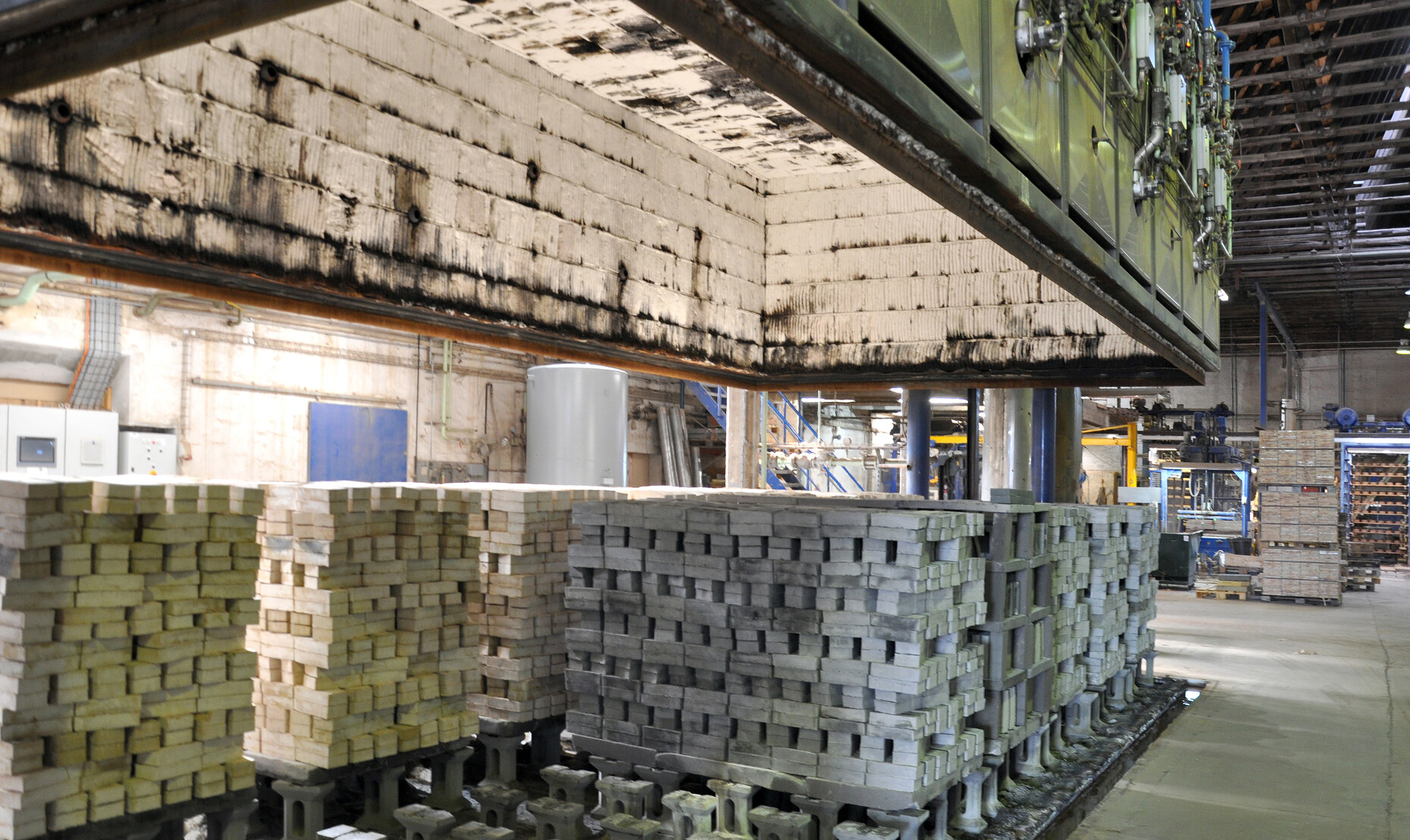The brick-makers at Nybøl Nor
The heavens extend forever over Nybøl Nor. Here and there, a patch of blue, in-between clouds chase each other hither and thither. Here, on the northern tributary of the Flensburger Förde, lies Petersen, the Danish brickworks. The countryside here in southeast Jütland is almost as flat as the mirror surface of the Haff’s water, flanked by the occasional little wood, solitary trees, flowers, meadows and fields.
On entering the small building, clad in bright brick, what else, Christian Petersen greets you with an infectiously good mood. You swiftly realize that the senior boss, who took over at the helm of the company from his father in 1970, not only knows the business inside out, but also how to kindle others’ enthusiasm, irrespective of whether they are staff members or clients. Christian is the born communicator, and greets you not wearing any old thing but a jacket that looks like it is made of brick. Indeed, in the room on the ground floor you might be forgiven thinking the entire world is made of brick. Wherever you look, there are stacks of photographs, print-outs, books, molding blocks, specimen materials, all of which can be used to demonstrate: bricks. Even babies, or so a framed picture among all the others suggests, seem to be made of bricks here. Only a few seconds elapse before Christian grabs a blue file from among all the others which bears the words: “Petersen Tegl Strategi”. With a broad grin he asks: Do you want to know what my strategy looks like? You haven’t even got round to nodding and he is already opening the file and, beaming from ear to ear, showing you what it contains: One single sheet with a picture of a human brain and the words above it: “Strategi – Brug denne !!!”
Turn on your brain, think a little further than the rivals, now that is typical for Christian Petersen. He loves surprising his guests, is always super-alert. He knows how to make a point, tells stories superbly. Christian is clearly a man of action, someone who exudes energy, and also someone who thinks deeply, but does not hesitate to then act and move things forward. For things, read: bricks.
However, guests gradually grasp all the better in the course of the next few hours that it was not just a good grain and a good presentation that ensured the business with bricks has been blossoming in the family for seven generations now, well eight since his daughters came on board. Since Danish King Christian VII issued the smallholder Peter Andresen permission to erect a brickworks on Nybøl Nor on May 17, 1791, the men at the helm have had to weather the one or other storm. Down through the centuries, brains, courage, wit and a touch of craftiness helped maintain and expand the brickworks, but the success also required something Christian clearly has lots of: a big heart and a sense of family.
When the brickworks was first founded, with its 6.5 square kilometers Nybøl Nor was an ideal place to make bricks. Along the coast there were plenty of clay deposits from the ice age, and the channel to Flensburger Förde was an ideal transportation route. Around 1800 the brickworks thronged the shoreline reaching as many as about 50 at one point. No other place in North Europe could boast such a concentration. Today only six have survived. Petersen Tegl is one of the few that has managed since its establishment more than 225 years ago to grow from a local brickworks to a highly specialized, global exporter. And in the process has always worked closely with architects from around the world.
That was not possible simply with high-quality brocks made by hand. On the meeting room wall there is a watercolor showing Christian at “his” big machine. After all, he invented it. It produces bricks largely automatically, lots of bricks, and among others the special ones, their size, shape and color still defined by hand. How this actually works is something Christian explains later during a tour of the brickworks. The drawing shows not just Christian’s machine. In the background you can discern the bay with the sailing boats on which he would love to spend more time; and in the foreground the bonsais he has been patiently cultivating for many years now. Next to this, in beautiful handwriting “Christian & the crazy machine – a story from Denmark”. It begins like all fairytales: “Once upon a time there was a brick-maker at Nybøl Nor ...”.
Given Christian’s temperament it is small wonder that he loves poignant phrases and quotations. They festoon the walls, in the corridor, the office, the factory. Like the man, they too present small and big ideas pithily. They help him convey his outlook on things and encourage his staff constantly to tackle things the way he thinks is best. Many of the slogans he likes most and can use, so he recalls, stem from a calendar someone gifted him and his wife. This quote is from Wilhelm Busch: “No one notices a healthy stomach: lots of work, little gratitude.” This one from US businessman Franklin B. Jones: “If you have never trodden on someone’s feet you’ve probably never moved from the spot.” And in one of the factory halls where his big machine turns out bricks there’s a sign saying: “You don’t need to be mad to be here, but it really helps!”
Doubtless one turning point in the recent corporate history of Petersen Tegl as the collaboration with Peter Zumthor in 2000 to create the new Kunstmuseum Kolumba build for the Archbishopric of Cologne. They spent much time with the discerning Swiss architect discussing his ideas about Roman bricks and what was possible in terms of sizes and colors. The project then resulted not only in bricks that are very special in terms of size, shape and color, but led to Petersen devising an extensive collection of hand-made horizontal building ceramics for walls and paving. Today, variants of Kolumba™ are used for building projects the world over.
All Kolumba™ bricks are made using artisanal techniques that go back centuries: The readied clay is squeezed by hand into wooden molds to form longitudinal bricks, dried and then fired. The different surfaces and countless nuances arise owing to temperature differences in the firing. The standard Kolumba™ version is sized 52.8 x 10.8 x 3.7 centimeters, but can be customized in terms of size, special colors and surfaces. Should, contrary to expectations, discoloring happen during the firing, the bricks nevertheless tend to get used. Diverse, lively, unmistakable – this is what you get when you use Petersen bricks for a facade, and they are second to none in terms of durability.
With Cover™ Petersen now also has a surprisingly new brick product in its range that can be used both for facades and for roofs – giving a building a striking and contemporary façade and delivering on the known benefits of using brick. The texture of the handmade bricks give rise to a harmonious façade that can even cover not just the walls but the roof to create a rural and yet high-end, indeed exclusive feel.
Architects today (and not just Mordic ones) are ever more frequently resorting to sustainable products such as handmade bricks- and this includes not only for villas or houses, but also for large structures, such as the European Hanseatic Museum in Lübeck or the Turnmill Building in London. The most recent example: The Kunstmuseum Basel new build designed by Christ & Gantenbein which boasts a five-story façade constructed from slender, handmade coal-fired bricks Series D91 and D11 with colors ranging from bright to dark gray. Typically, Petersen made them specially for the project. Indeed, and Christian is very clear on this: At Petersen no one says “no”. Anything goes! And because architects and developers love close and reliable support, the brickwork’s core business today has long since included developing bricks and clinker bricks for special orders, including special shapes – and it exports its products not only to countless European countries, but throughout the world, for example to the US, Japan, Russia and Australia.
A longs-standing tradition is one thing, success in today’s globalized world another. And Christian Petersen is very aware of this. Mass itself does not suffice, what you need is the ability to offer hand-crafted high-.end bricks made to order. After all, Petersen is one of the very few brickworks the world over that has mastered the art of coal-firing, which ensures the water-coated bricks come out in especially nuanced color variations. Which is also why one of Christian’s slogans is: “Tradition is not about preserving the ash, but passing on the fire.” The heavens extend forever over Nybøl Nor. Here and there, a patch of blue, in-between clouds chase each other hither and thither.































